The Maui Invasive Species Committee (MISC) provides the community with powdered citric acid for the purpose of controlling coqui frogs. When mixed with water, a 16% citric acid solution effectively controls coqui and breaks down quickly in the environment. MISC crews use a 12-16% solution in our coqui control efforts
Citric acid solution is the only legal and EPA-approved agent for controlling coqui frogs and is both the most effective and safest of all control options tested. Nevertheless, when freshly applied this solution can be corrosive to metals and can cause plants to develop brown spots and drop their leaves, symptoms of phytotoxicity. The citric acid solution remains active, effectively controlling coqui for approximately 30 minutes before losing potency. After this 30-minute window has passed, the citric solution can be rinsed off plants to reduce any damage.
To protect your plants from damage, avoid spraying citric solution on the plants listed below. MISC recommends hand capturing coqui frogs located in these plants, instead. If these plants are accidentally sprayed, rinse them with abundant fresh water immediately. Additional plants that may be sensitive to the citric acid solution include all keiki (young) plants and potted plants. During times of drought additional plants may suffer from phytotoxicity after being sprayed with citric acid. If coqui frog treatments are occurring during times of drought, MISC recommends rinsing all plants that have been treated with fresh water after 30 minutes.
Find photos and identification tips for some of the citric-sensitive plants by continuing to scroll or clicking the link to jump to the plant information.
- Mock Orange (Murraya paniculata)
- Orchids (Orchidaceae sp.)
- Air plants (Tillandsia sp.)
- Anthurium (Antherium sp.)
- Calathea (Calathea sp.)
- Strepotocarpus (Streptocarpus sp.)
- Eggplant (Solanum melongena)
- Leather-leaf fern (Rumohra adiantiformis)
Mock Orange (Murraya paniculata):
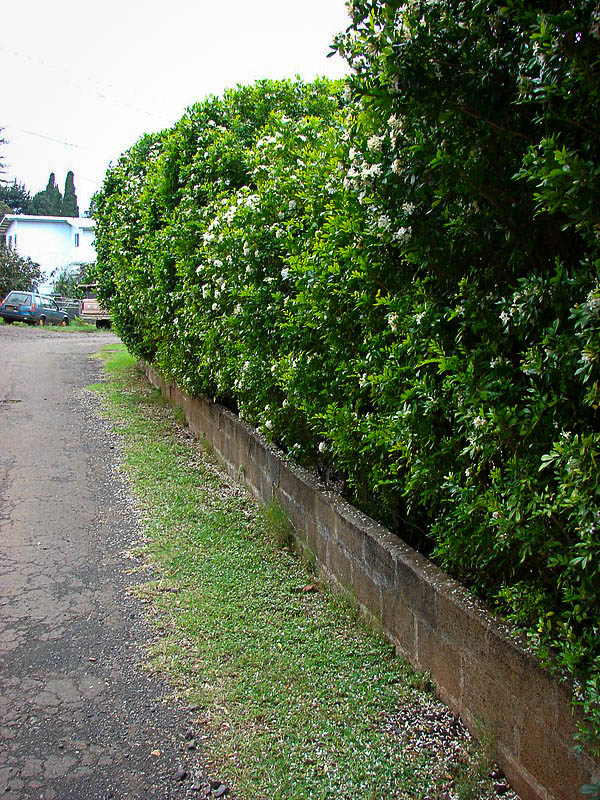
Often grown as a hedge. 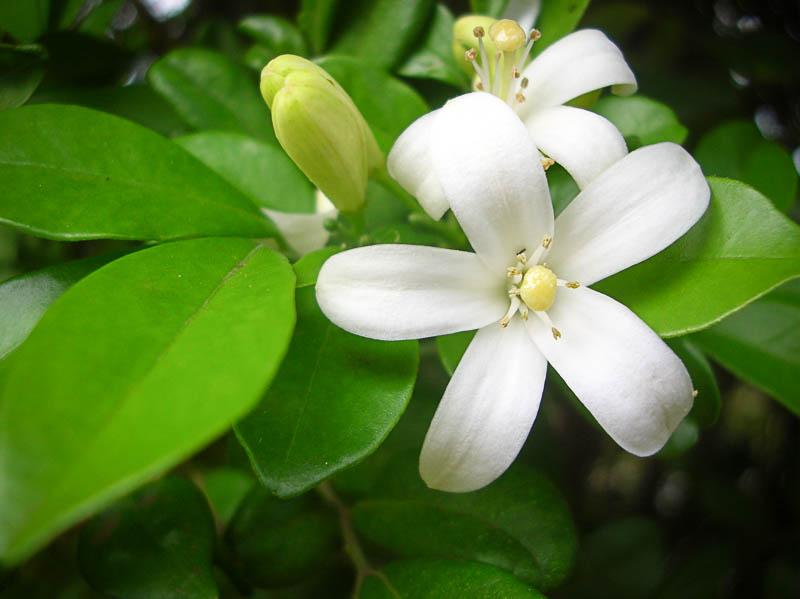
Small (1/2 to 2/3 in wide) fragrant flowers 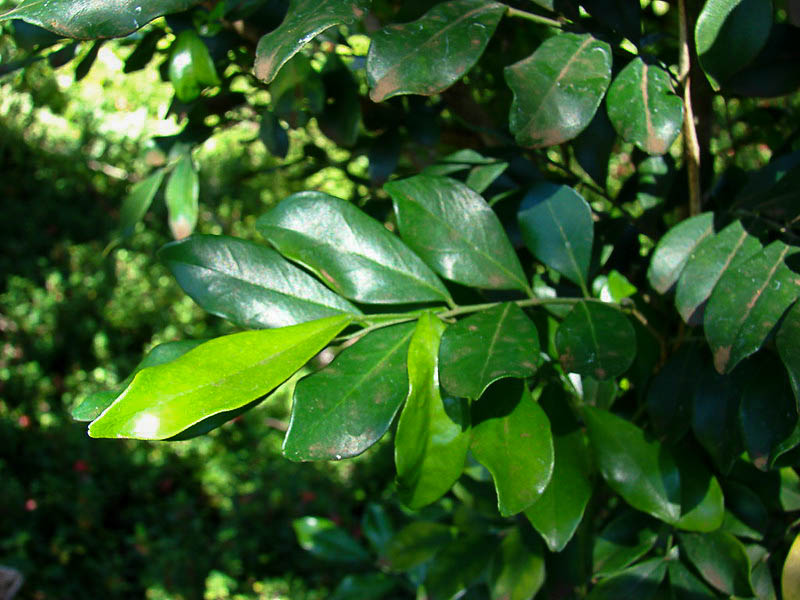
Smooth, glossy leaves
Very sensitive to any amount of citric spray. Rinse accidental citric spray/mist with water immediately!
Mock orange is a tropical evergreen grown as a shrub, ornamental tree, or hedge found throughout Maui. The flowers are small (-1⁄2 – 2⁄3 in wide), white, very fragrant, and bloom all year long. This plant is related to citrus, and produces orange to red fruits up to one inch long. The leaves are glossy and smooth to the touch.
Orchids (Orchidaceae sp.):
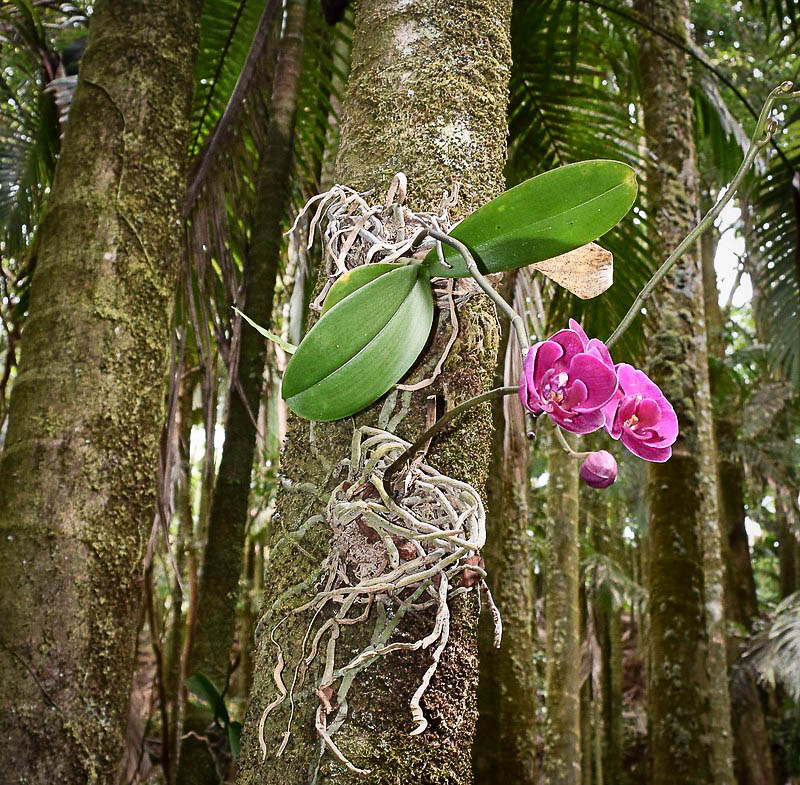
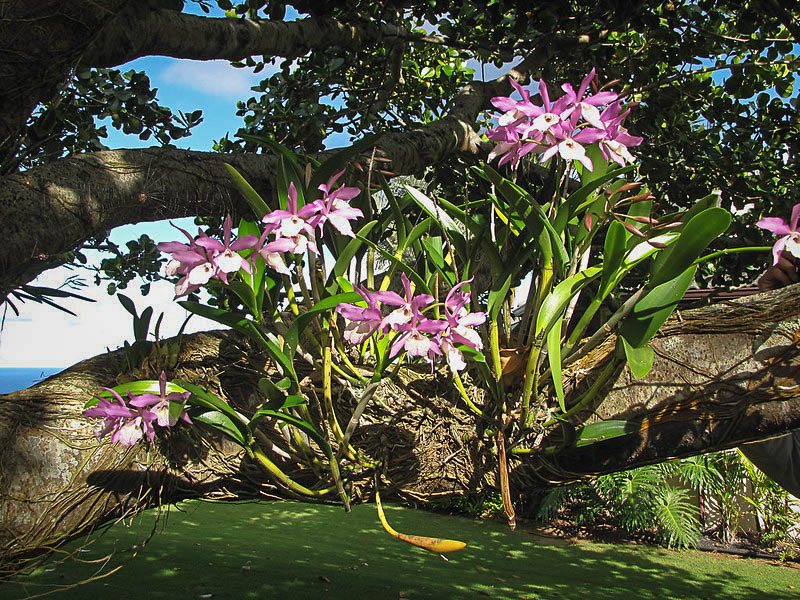
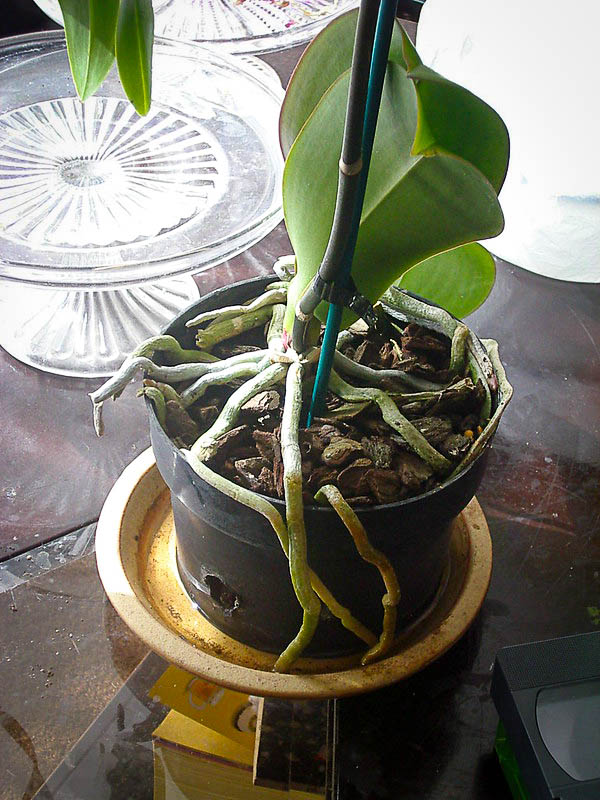
Orchids have noodle-like roots that grow outside of soil 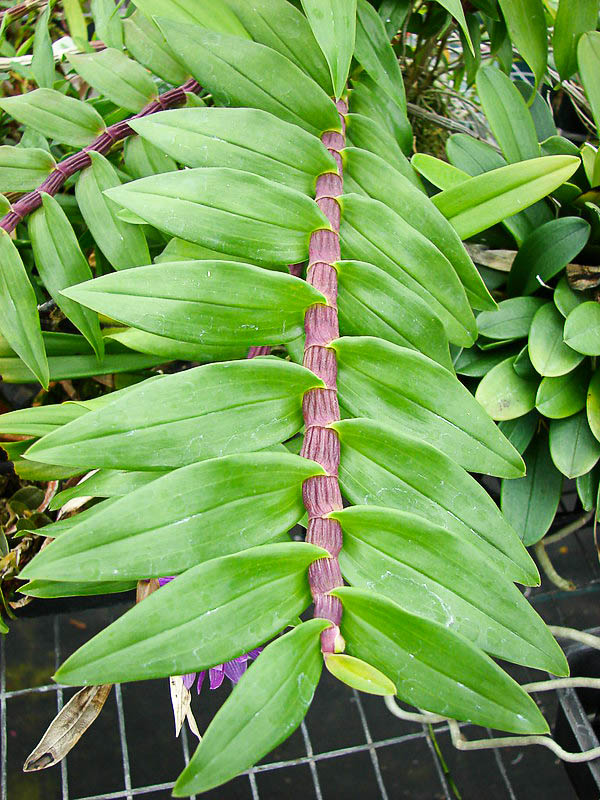
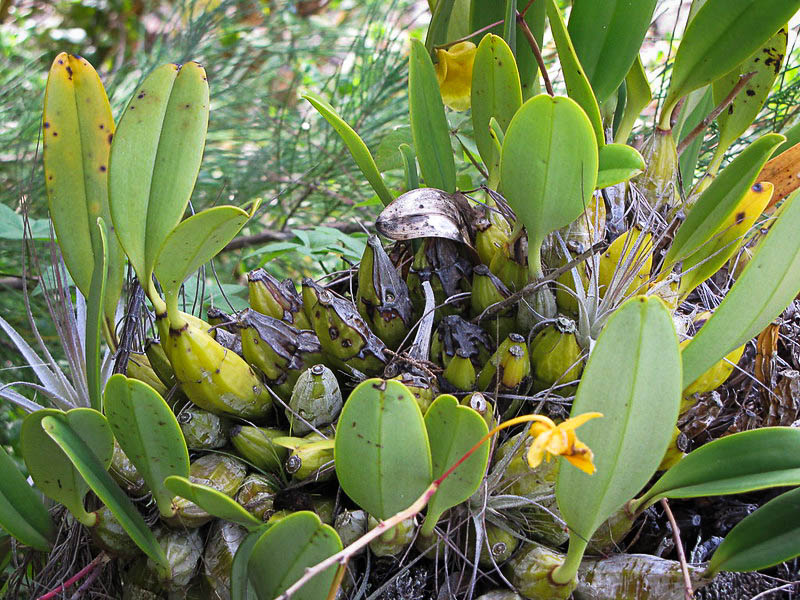
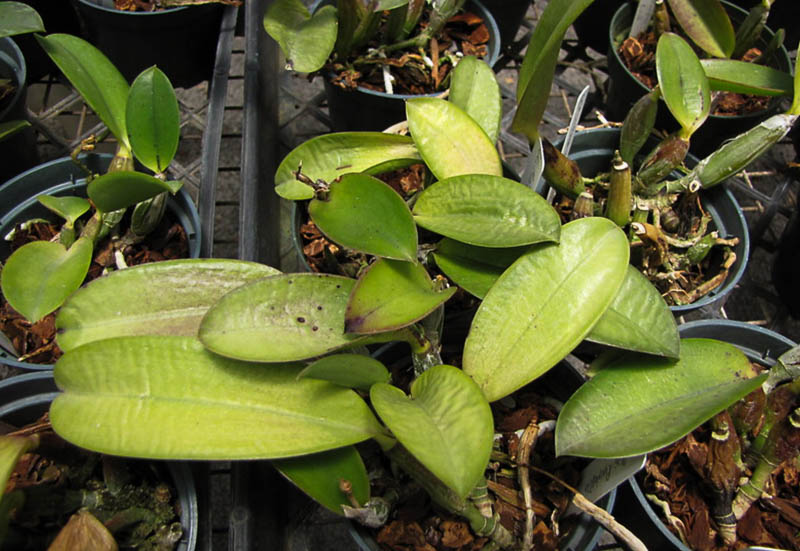
Very sensitive to any amount of citric spray. Rinse accidental citric spray/mist with water immediately!
One of the largest and most diverse families of plants on the planet, orchids are grown in pots, epiphytically on volcanic rocks or trees, and in the soil or ground. Many are important and valuable commercial plants, specifically vanilla, an orchid that can grow on trees. The roots of all orchids are cylindrical rhizomes (creeping rootstalk like ginger, but smaller) from which fleshy, noodle-like roots grow. Many have epiphytic (aerial) roots as the plant derives moisture and nutrients from the air. The leaves are usually one to two and fleshy, oblong or elliptical in shape. Leaves are usually alternate on the stem, often folded lengthwise along the center. Very showy flowers are produced infrequently, so identification must be made by leaves and roots.
Air plants (Tillandsia sp.)
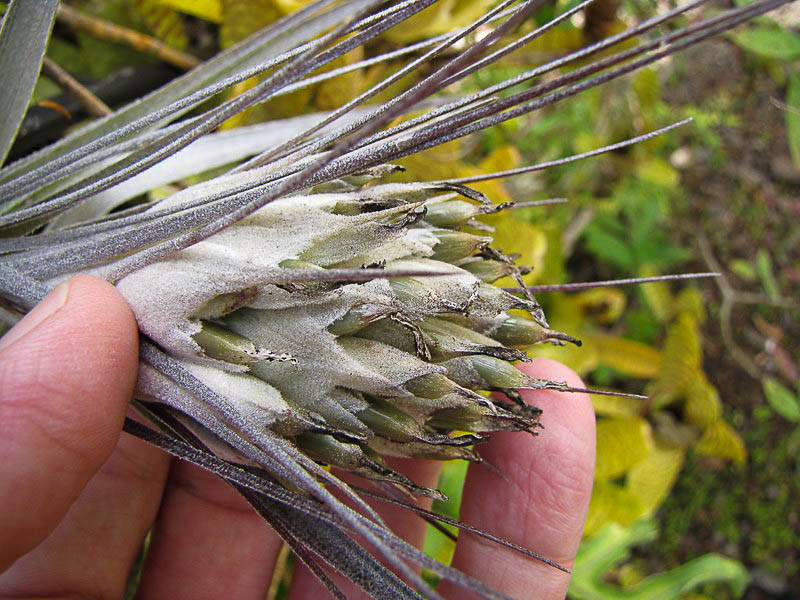
Many air plants have fuzzy, white leaves. 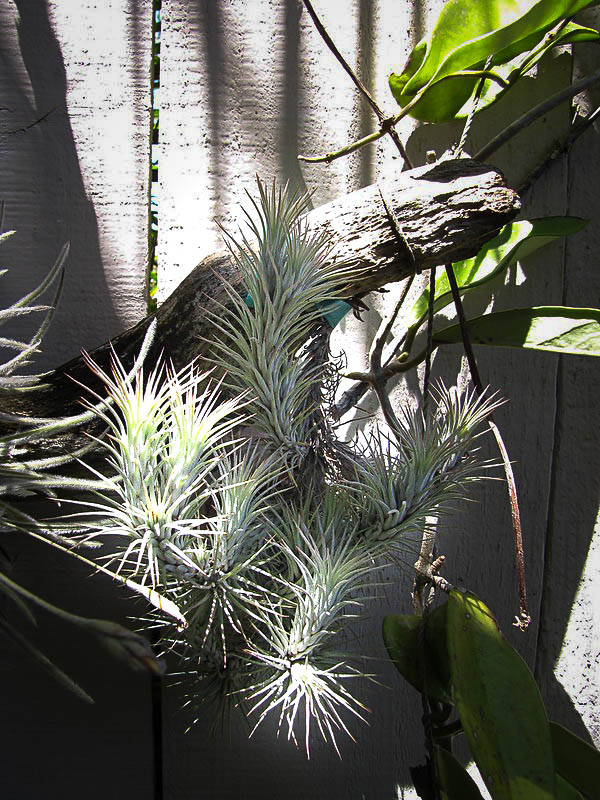
Air plants can grow on trees. 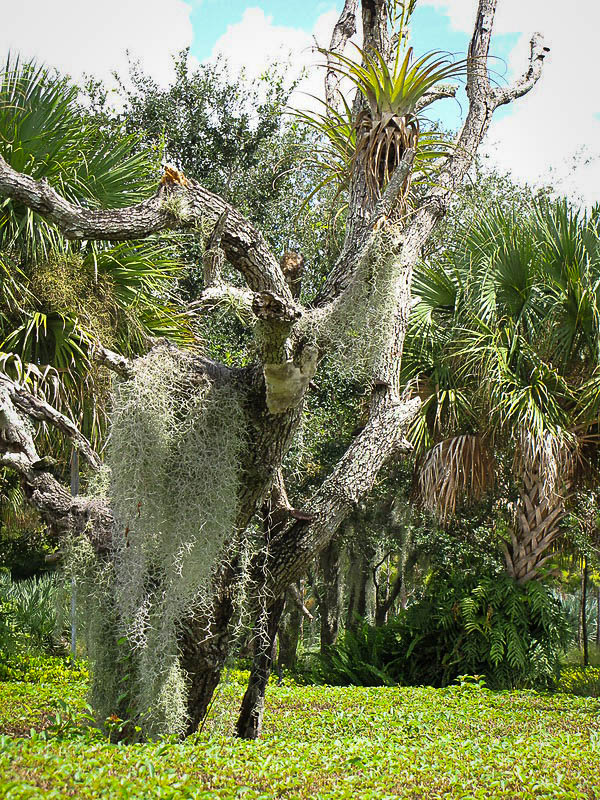
Pele’s hair / Spanish moss with a tillandsia in a tree. 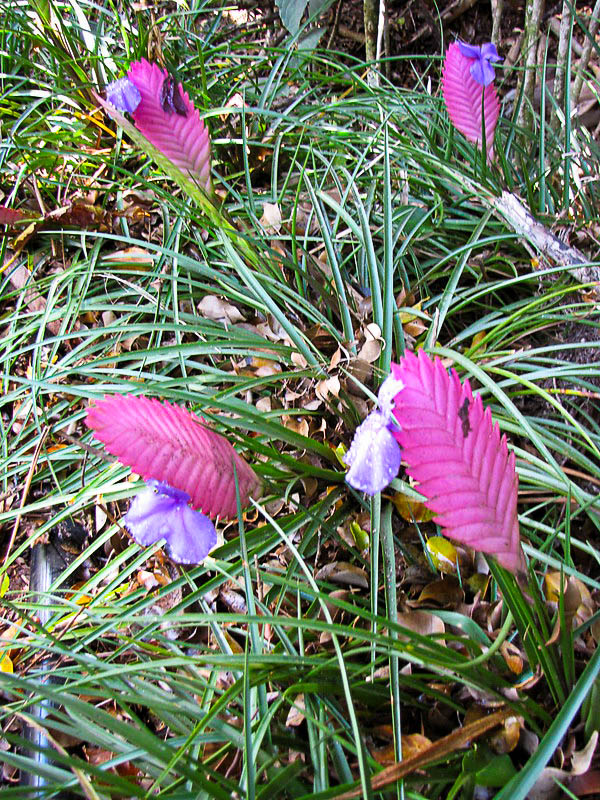
Tillandsia is an air plant that grows on the ground. 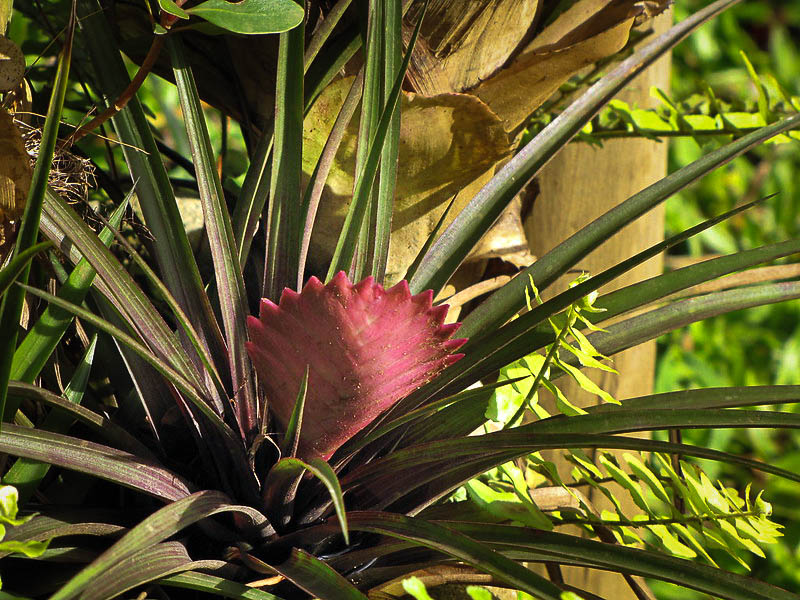
Very sensitive to any amount of citric spray. Rinse accidental citric spray/mist with water immediately!
Tillandsia species include Spanish moss, Pele’s hair, and air plants. These plants are related to bromeliads, and often have similar leaf orientations and shapes (leaf rosettes arranged to collect water). Air plants are epiphytic (derive their moisture and nutrients from the air) and/or aerophytic (with minimal roots and leaves able to absorb moisture and nutrients from the air). Since they don’t need soil, they can grow on trees, rocks, bark, wires, etc. Many different plants share the same common names (i.e. air plant and tillandsia).
Anthurium (Anthurium sp.):

Anthurium are grown in many Ha’ikū nurseries. 
Anthurium often have heart-shaped leaves. 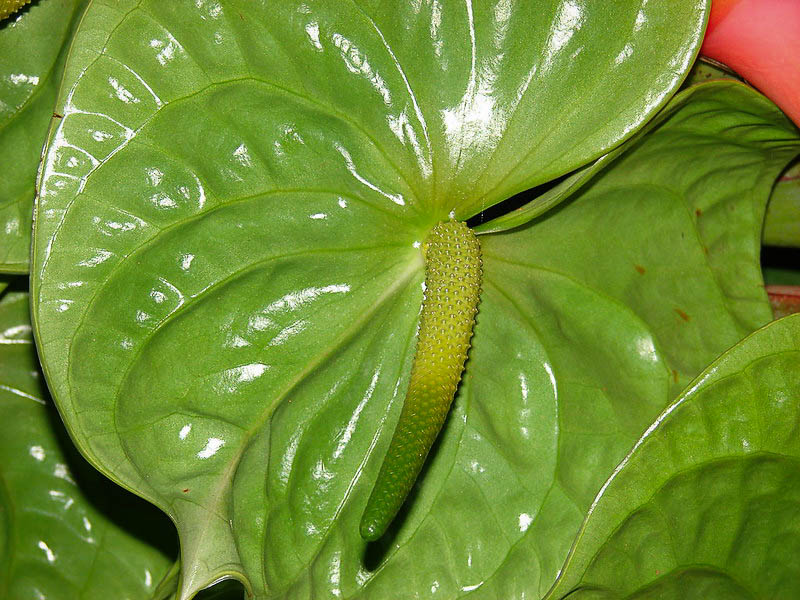
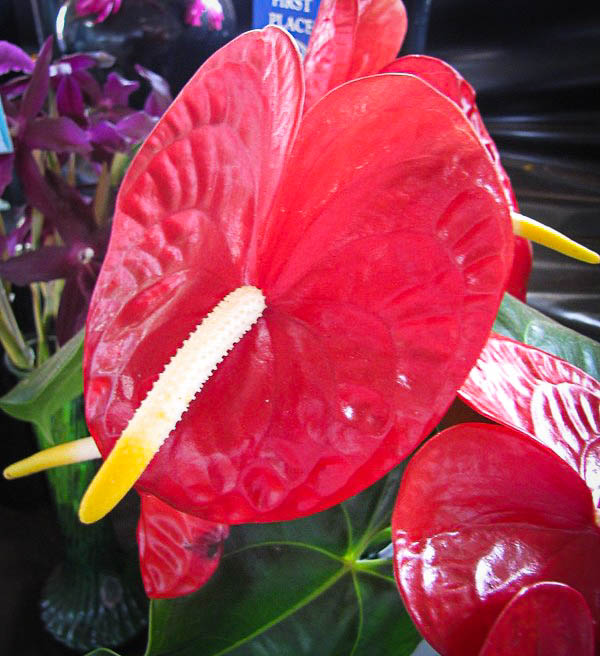
Very sensitive to any amount of citric spray. Rinse accidental citric spray/mist with water immediately!
Anthurium are important in commercial landscaping and as a cut flower plant in Hawaiʻi. They can grow epiphytically on other plants and in soil. Leaves grow out of a cluster and vary in shape. The “flower” is distinctive with a dense spiral spike growing out of a bract (flower petal-like leaf structure) that is variable in shape, but can be lance-shaped, heart-shaped, and can form a hood over the spike.
Calathea (Calathea sp.):
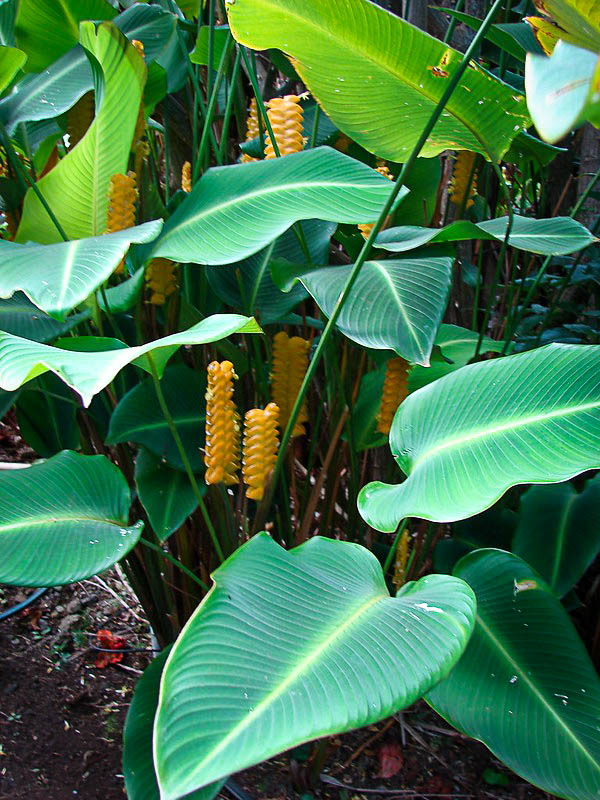
Rattlesnake plant 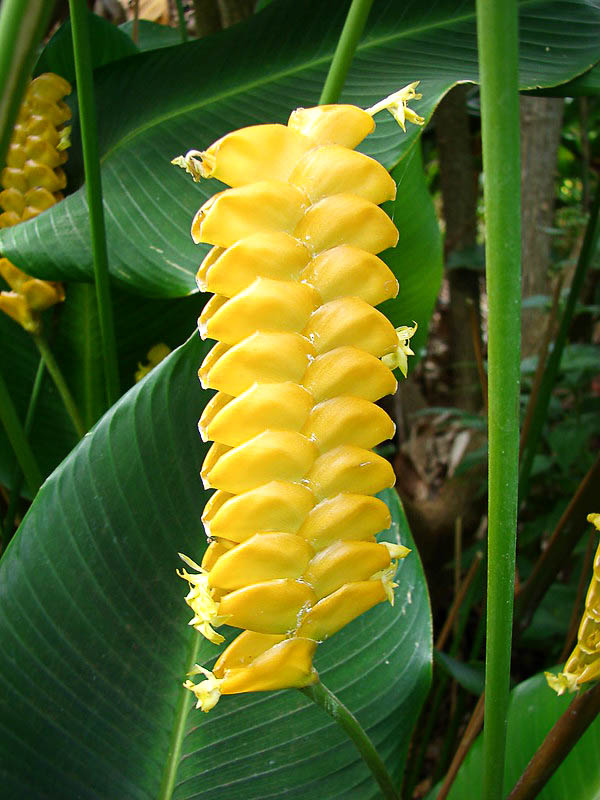
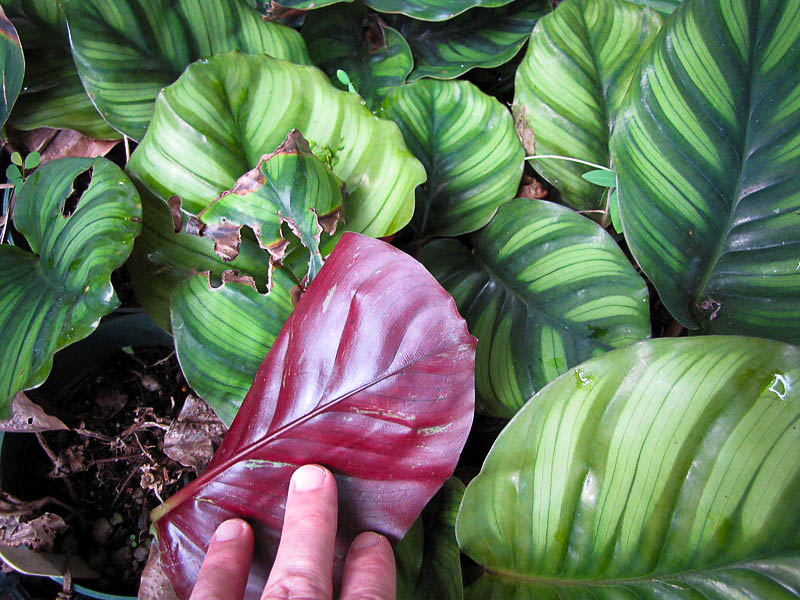
Zebra plant. Notice the red – purple coloration on the leaf underside 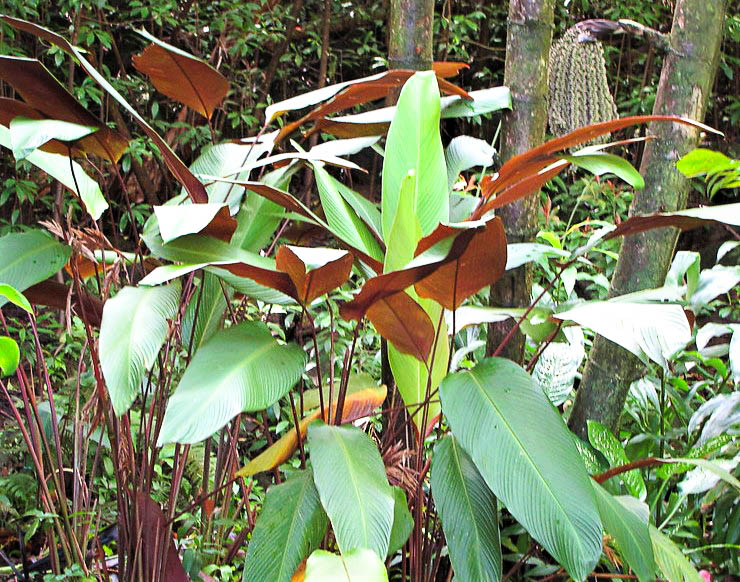
Wheat calathea 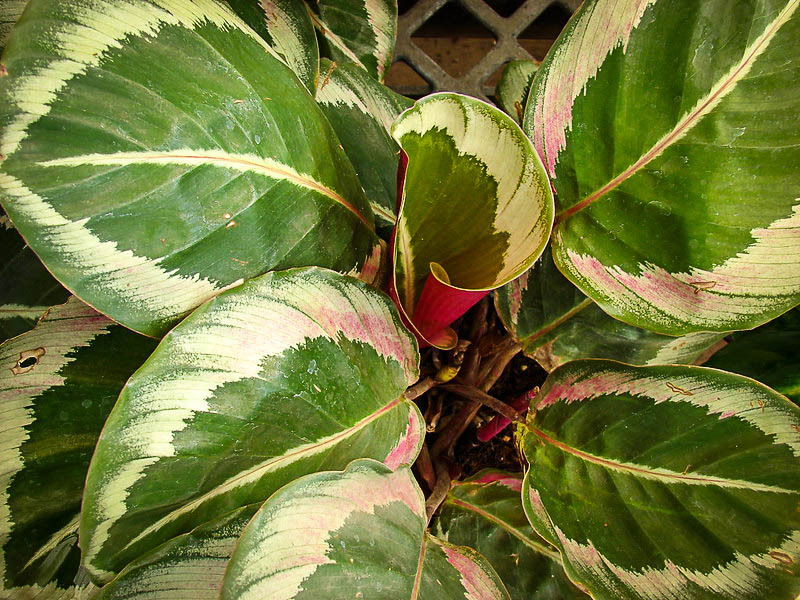
Medallion plant
Very sensitive to any amount of citric spray. Rinse accidental citric spray/mist with water immediately!
A popular landscaping plant, this genus includes many different cultivars such as rattlesnake plant, zebra plant, cuban cigar plant, and medallion plant. Calathea are related to ginger and may sometimes have similar leaves and flowers. Many have decorative leaves with purple to red coloration on the underside.
Strepotocarpus (Streptocarpus sp.):
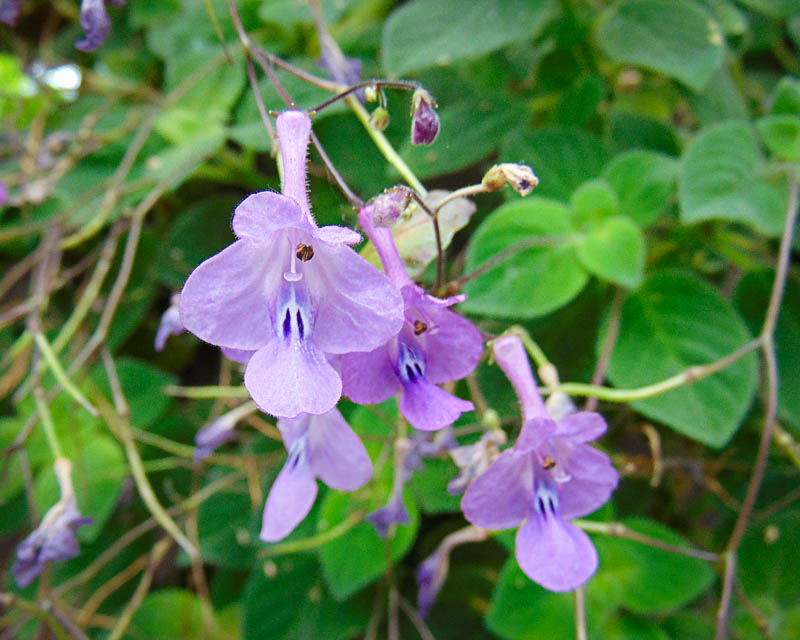
Image: Nadia Talen 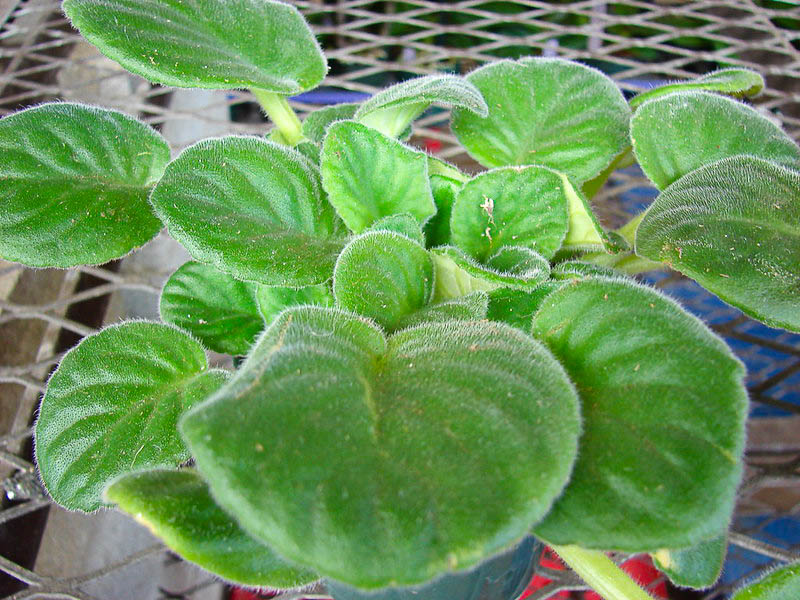
African violet 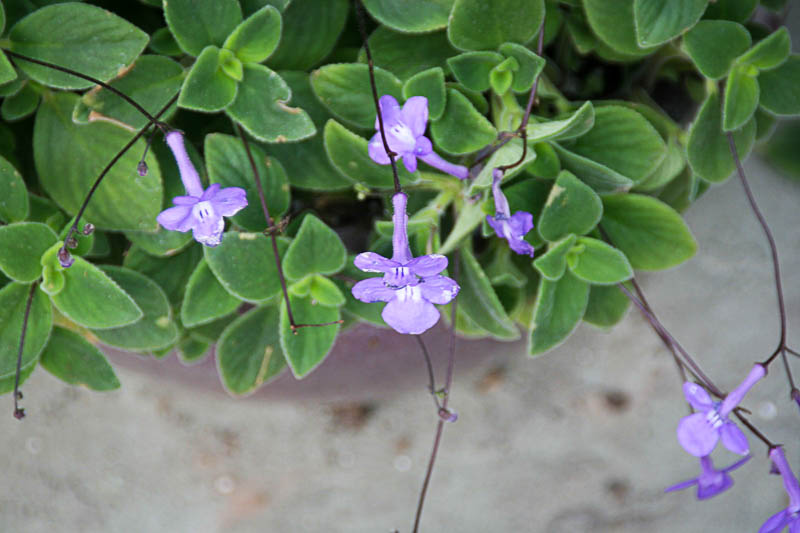
Image: David J. Stang
Very sensitive to any amount of citric spray. Rinse accidental citric spray/mist with water immediately!
These ornamentals are related to African violets and include cape primrose and “streps.” Streps have orchid-like or violet-like flowers that hover or arch over the plant. Leaves often grow in a rosette (circular arrangement) and have noticeable veins. Stems and leaves are often covered in hairs and are fuzzy. Streps are closely related to African violets and have similar leaves.
Eggplant (Solanum melongena):
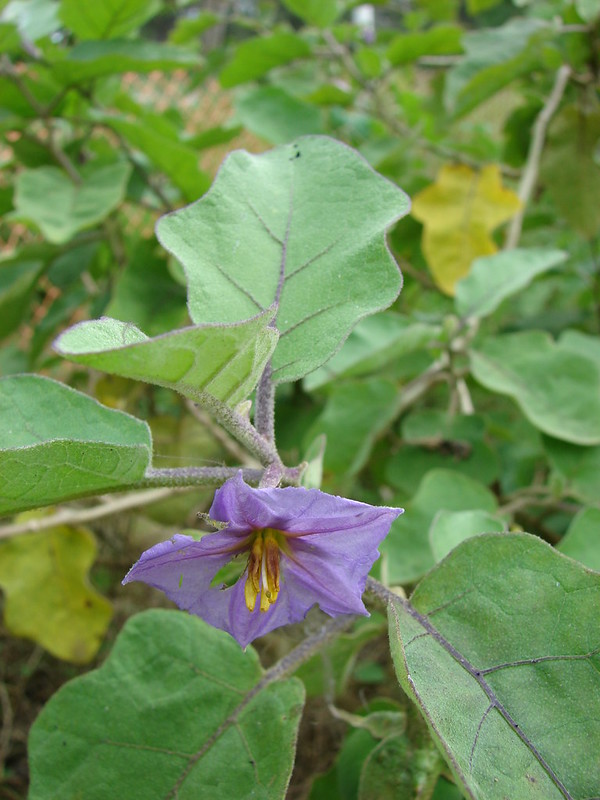
Star-shaped flowers. 
Slightly fuzzy leaves. 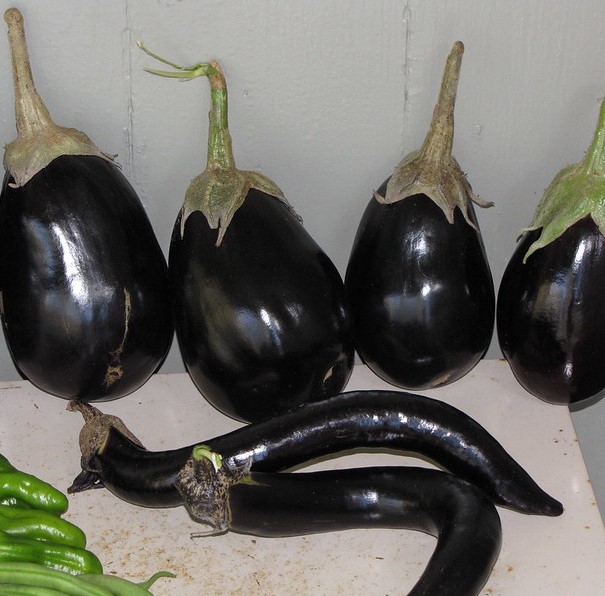
Eggplant fruits come in a variety of shapes and colors.
Very sensitive to any amount of citric spray. Rinse accidental citric spray/mist with water immediately!
Eggplants are a common garden plant that are sensitive to citric solution. There are popular varieties of eggplant with fruits that are purple, white, or a combination, as well as in a variety of shapes from small and round to long and skinny. Avoid spraying any eggplants in gardens or containers.
Leather-leaf fern (Rumohra adiantiformis):
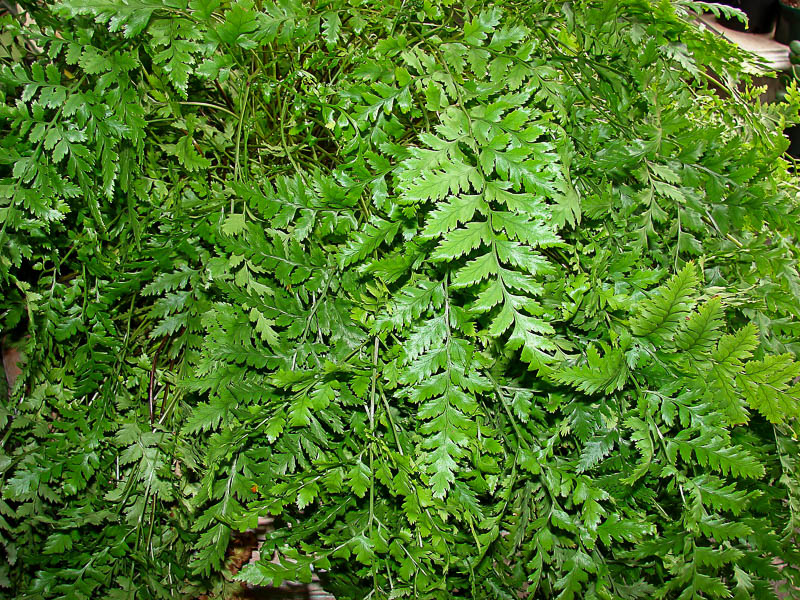
Triangle shaped leaves 
Round sori (spore/seed) found under leaves 
Very sensitive to any amount of citric spray. Rinse accidental citric spray/mist with water immediately!
This fern is grown both as a groundcover and an important commercial plant. The cut fronds are commonly used in flower arrangements. This fern can grow 2-4 feet tall. Look for highly dissected, triangular shaped leaves with round sori (spore/seeds) on the underside.
The University of Hawai’i College of Tropical Agriculture and Human Resources (CTAHR) and Hawaiʻi Department of Agriculture tested the effects of using a citric acid solution on a number of plants that was nearly double the strength of MISC’s suggested citric acid solution (25% vs. 16%). They tested by applying and leaving the spray on the plants for six weeks. The plants above that were in this test had varying levels of phytotoxic damage from this strong solution. Read the full paper: Response of Plants Following a Foliar Application of 25% Citric Acid and view the images from the test.
All images unless otherwise noted are used courtesy of Forest and Kim Starr.


